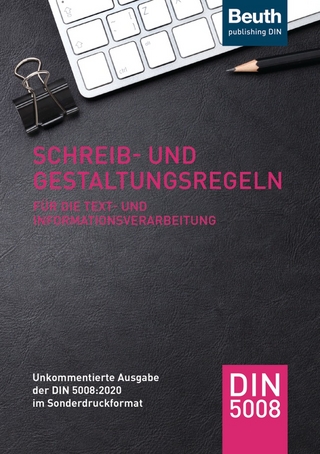
Preparing To Teach Writing
Research, Theory, and Practice
Seiten
1998
|
2nd New edition
Lawrence Erlbaum Associates Inc (Verlag)
978-0-8058-2266-3 (ISBN)
Lawrence Erlbaum Associates Inc (Verlag)
978-0-8058-2266-3 (ISBN)
- Titel erscheint in neuer Auflage
- Artikel merken
Zu diesem Artikel existiert eine Nachauflage
This volume examines the theories and methods associated with teaching composition. It offers a discussion of the historical factors that have shaped today's composition. In addition, it examines the classroom as a writing workshop and the role that reading plays in effective writing.
This text is a comprehensive survey of theories, research, and methods associated with teaching composition successfully. It begins with a discussion of the historical factors that have shaped today's composition instruction, by tracing the development of rhetoric from ancient Greece through contemporary strands defined by modernism, romanticism, and postmodernism. This is followed by chapters on models for teacher writing; the classroom as a writing workshop; the role that reading plays in effective writing; style; English as a second language and nonstandard English; the psychology of writing; writing assignments and assessing writing as the most important factors in evaluation--including a step-by-step guide to implementing holistic and portfolio assessment. Relevant for composition teachers at all levels, this text is particularly useful for preservice and in-service English and language arts teachers at the middle and secondary levels.
Other features include:
* thorough discussions of English as a second language and nonstandard English--topics that are increasingly vital to effective teaching;
* insightful treatment of Black English Vernacular (Ebonics);
* consideration of the psychology of writing in light of the current emphasis on critical thinking skills in our schools;
* examination of the validity of the critical thinking focus of instruction used in many classrooms; and
* useful pedagogical aids--including chapter overviews; prompts for journal entries to give students opportunities to reflect on the material and how it relates to their own experiences; sample assignments; sample student papers; study questions and activities at the end of each chapter that provide opportunities to apply the key ideas.
New in the Second Edition
This popular text has been fully revised and updated throughout; the chapters on reading and writing, psychology and language, and ESL and nonmainstream students are almost completely new, reflecting major changes in these areas since the first edition was published. The revised edition is more open-ended, allowing readers to strike out more on their own after seeing what the various experts have to say. Unlike other texts in this area, this book includes lengthy discussions of English as a second language and nonstandard English--topics that are increasingly vital to effective teaching.
This text is a comprehensive survey of theories, research, and methods associated with teaching composition successfully. It begins with a discussion of the historical factors that have shaped today's composition instruction, by tracing the development of rhetoric from ancient Greece through contemporary strands defined by modernism, romanticism, and postmodernism. This is followed by chapters on models for teacher writing; the classroom as a writing workshop; the role that reading plays in effective writing; style; English as a second language and nonstandard English; the psychology of writing; writing assignments and assessing writing as the most important factors in evaluation--including a step-by-step guide to implementing holistic and portfolio assessment. Relevant for composition teachers at all levels, this text is particularly useful for preservice and in-service English and language arts teachers at the middle and secondary levels.
Other features include:
* thorough discussions of English as a second language and nonstandard English--topics that are increasingly vital to effective teaching;
* insightful treatment of Black English Vernacular (Ebonics);
* consideration of the psychology of writing in light of the current emphasis on critical thinking skills in our schools;
* examination of the validity of the critical thinking focus of instruction used in many classrooms; and
* useful pedagogical aids--including chapter overviews; prompts for journal entries to give students opportunities to reflect on the material and how it relates to their own experiences; sample assignments; sample student papers; study questions and activities at the end of each chapter that provide opportunities to apply the key ideas.
New in the Second Edition
This popular text has been fully revised and updated throughout; the chapters on reading and writing, psychology and language, and ESL and nonmainstream students are almost completely new, reflecting major changes in these areas since the first edition was published. The revised edition is more open-ended, allowing readers to strike out more on their own after seeing what the various experts have to say. Unlike other texts in this area, this book includes lengthy discussions of English as a second language and nonstandard English--topics that are increasingly vital to effective teaching.
Contents: Preface. Rhetoric and Writing. Models for Teaching Writing. The Classroom as Workshop. Reading and Writing. Grammar and Writing. Style. English as a Second Language and Nonstandard English. The Psychology of Writing. Writing Assignments. Assessing Writing. Appendices: Writing Myths. Sample Essays.
| Erscheint lt. Verlag | 10.7.2007 |
|---|---|
| Verlagsort | Mahwah |
| Sprache | englisch |
| Maße | 152 x 229 mm |
| Themenwelt | Geisteswissenschaften ► Sprach- / Literaturwissenschaft ► Literaturwissenschaft |
| Sozialwissenschaften ► Pädagogik | |
| ISBN-10 | 0-8058-2266-6 / 0805822666 |
| ISBN-13 | 978-0-8058-2266-3 / 9780805822663 |
| Zustand | Neuware |
| Haben Sie eine Frage zum Produkt? |
Mehr entdecken
aus dem Bereich
aus dem Bereich
Buch | Softcover (2020)
Beuth (Verlag)
19,90 €



